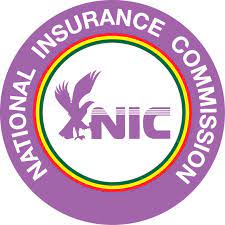Results outcome by the National Insurance Commission indicates that the total capital base for the insurance industry grew by 33.0 per cent in 2021.
According to the Commission, the industry grew by staggering GH¢971 million, moving from GH¢2.91 billion recorded in 2020 to GH¢3.88 billion in 2021.
The growth in the sector led to an improvement in the Capital Adequacy Ratio (CAR) in both the Non-Life and Life sectors of the insurance industry. In 2021, the industry average Capital Adequacy Ratio improved by 456.0 per cent and 524.0 per cent in the Non-Life and Life sectors, respectively.
According to the National Insurance Commission (NIC), the maintenance of Capital Adequacy Ratio above the required 150.0 percent, partly depends on the willingness of the insurance industry to stick to and continuously improve on good corporate governance practices.
Provisional results by the National Insurance Commission indicate that solvency risk continues to be fairly contained, with a positive and stable outlook into the near future.
Gross premiums stood at GH¢54.70 billion in the year under review, compared to GH¢3.95 billion in 2020. Premiums grew on the back of the digitisation drive by NIC.
With respect to the Life sector, the Commission indicated that increase was propelled by investment income which compensated for the poor underwriting results in the sector.
NIC noted that in the non-Life sector, the slump was partly due to the implementation of the new Minimum Capital Requirements, which pumped up the equity base of most Non-Life insurers, as underwriting and investment returns improved over the period. Broadly, profitability risk was contained in 2021.
Insurers are therefore expected to build on the recapitalisation exercise to institute efficient and effective cost measures to improve underwriting results in the near to medium term.
Investment Assets
Investment assets in the Life sector amounted to ¢5 4.8 billion compared to ¢2.8 billion in the Non-Life sector. Both Life and Non-Life sectors maintained the trend of having the concentration of investment assets in fixed income instruments.
For the first time in three years, growth in real estate investments for the Non-Life sector plummeted. On both fronts (Life and Non-Life sectors), investment assets continue to be concentrated in Government of Ghana (GoG) and Bank of Ghana (BoG) securities.
Retention ratio grows
The retention ratio continued its ascendancy in 2021 on both fronts as both Non-Life and Life sectors grew.
Whereas Non-Life insurers retained 70.0% of premiums, Life insurers retained 89.0%. The relatively lower retention ratio for non-life insurers, the NIC pointed out, continues to reflect the nature of risks underwritten and the high gross premiums, relative to capital ratio in the industry.
On the other hand, the high retention ratio among Life insurers can be generally attributed to compliance with the NIC’s Reinsurance Guidelines, and specifically to the demand for savings-linked insurance products and the long-term nature of their actuarial liabilities.
In the medium to long-term, it is expected that improved capitalisation will lead to a higher retention ratio in the Non-Life sector while encouraging the underwriting of pure risk insurance products in the Life sector.
The NIC as of December 2021, has approved ¢ 278 million in respect of overseas reinsurance premium transfers.


Comments are closed.